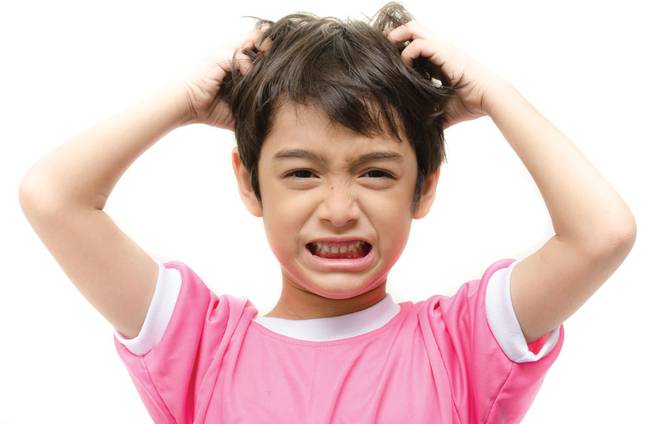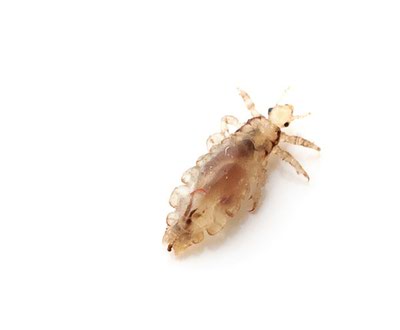
Sunday, May 3, 2015 | 2 a.m.
Pediculosis, as the condition is formally called, is an infestation of the hair and scalp by lice, parasitic insects that feed exclusively on human blood. Lice are spread through direct contact with an infested person or by sharing personal care items. Lice are most prevalent among young children, who tend to get up close and personal during playtime.
As unpleasant as the scalp-dwellers sound, they’re more of a nuisance than a health threat. Head lice, unlike body lice, carry no known diseases. Secondary infections can result from scratching, but that’s rare.
In the Clark County School District, students with infestations are sent home for treatment, while parents of classmates are notified (although people living with the infested students are more at far risk than their classmates.) Once treatment is complete, the students are free to return to school, even if nits — lice eggs or egg remnants that can remain on the scalp — still are present.
If a school sees repeated lice infestations, however, the campus nurse could implement a “no nit” policy.
Who gets lice?
Head lice are common and found worldwide. Six to 12 million American children ages 3 to 11 suffer infestations every year.
People with longer hair tend to be more at risk, and blacks tend to be less at risk, possibly because the claws of the lice most commonly found in the United States are better adapted for grasping the shape and width of hair shafts of people of other races, according to the Centers for Disease Control and Prevention.
Signs and symptoms of lice
■ A tickling feeling of something moving in the hair
■ Itching (caused by an allergic reaction to bites)
■ Difficulty sleeping (lice are most active in the dark)
■ Visible nits or lice
Life cycle of a louse
Nit — the egg stage
■ Usually white or yellow, about the size of a knot in a piece of thread
■ Live close to the scalp
■ Take eight to nine days to hatch, can’t hatch in temperatures below the typical temperature of a human scalp
■ Die within a week of being away from a human host
Nymph — an immature louse
■ Must feed on blood to survive
■ Mature into adults about nine to 12 days after hatching
Adult — a fully-developed louse
■ Tan or gray-white, about the size of a sesame seed, with six legs
■ Must feed on blood to survive
■ Can live up to a month on a person’s head, up to two days away from human host
■ Females are larger and lay about six eggs a day
■ Can survive underwater for several hours, do not die in chlorine
Treatment and prevention
Many over-the-counter remedies, called pediculicides, exist. Most common are shampoos that kill both lice and their eggs, but repeated use can irritate the scalp, and surviving lice can build up a resistance. Nit combs can be used in combination with shampoo to remove nits and lice from hair shafts.
If over-the-counter treatment doesn’t work, doctors can prescribe stronger medications.
Home remedies include saturating hair with olive oil, mayonnaise or butter to suffocate the bugs, but there’s no proof that such methods work.
Locals looking for a professional solution can turn to Lice Happens, a mobile head lice removal service.
For about $300, staff come to your home to wash and treat children’s hair.
To prevent lice
■ Keep long hair pulled back in a braid or bun.
■ Wear hair spray, gel or similar products. They make it hard for lice to stick to hair.
■ Avoid head-to-head contact during playtime and other activities.
■ Don’t share clothing, towels, bedding, stuffed animals, hats or hair brushes.
Parents who suspect their child may be infested should check their children’s heads once a week while symptoms are displayed, focusing on the scalp, behind the ears and near the neckline.
If someone in your house is infested
■ Vacuum floors and furniture.
■ Wash clothing, linens, stuffed animals and other fabric items used by the infested person within two days of being treated in water hotter than 130 degrees. Dry on a high-heat cycle.
■ Nonwashable items should be dry cleaned or stored in a sealed plastic bag and placed in the sun for two weeks.
■ Soak combs and brushes in water at least 130 degrees for five to 10 minutes.
■ Do not use fumigant sprays, which can be toxic to people and pets.


Join the Discussion:
Check this out for a full explanation of our conversion to the LiveFyre commenting system and instructions on how to sign up for an account.
Full comments policy